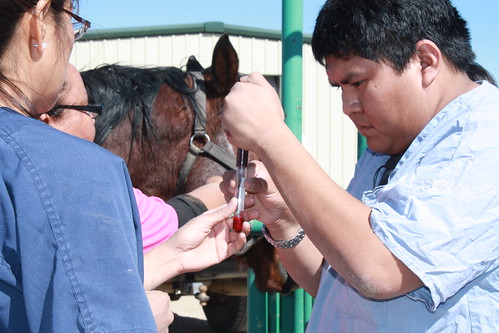
Oct. 20, 1994, is an important milestone in our nation’s history in regards to equity in research, education, and extension. On that date, 29 tribal colleges, representing different histories, cultural orientations, and organizational structures, received land-grant university (LGU) status. Such LGU status gave these institutions—referred to as 1994 LGUs—access to federal resources to help improve the lives of tribal students, while respecting sovereignty and promoting self-sufficiency in American Indian communities. In the ensuing 23 years, significant progress has occurred in building capacity at the 1994 land-grant system to better serve Native American students and communities.
The 1994s are part of the family of land-grants that the National Institute of Food and Agriculture (NIFA) supports through research, education, and extension programs. These programs recruit and retain students in the food and agricultural sciences, enhance economic opportunities and quality of life, improve nutrition and health, and protect natural resources and the environment.
The tribal colleges and universities, now numbering 34, are located in 13 states and provide access to higher education to over 80 percent of Indian Country. Collectively, they enroll approximately 20,000 students and provide vital services to some 50,000 tribal community members. Unlike most institutions of higher education, the 1994s teach in a cultural context that empowers students by drawing on the strength of their people’s histories, indigenous knowledge, and traditions.
The 1994s provide much-needed high school completion (GED), basic remediation, job training, college preparatory courses, and adult basic education programs. They serve as community libraries and centers, tribal archives, career and business centers, economic development centers, public meeting places, and elder and child care centers. Examples of the strength of community, education, pride, and opportunity abound in Indian Country. Here are just a few:
Chief Dull Knife College, in Lame Deer, Montana, developed welding courses to train apprentice welders to find jobs that could eventually triple the average salary of their Cheyenne reservation.
At Fort Totten, North Dakota, Cankdeska Cikana Community College provided the Spirit Lake Tribe citizens new extension education that helped reduce diabetes and improved health.
The Institute of American Indian Arts, in Santa Fe, New Mexico, is integrating agricultural science into every curriculum, linking them to American Indian worldviews, stories, and tradition.
Join me in congratulating our 1994 institutions on their 23rd Anniversary. As we look into the future, there is much more work to be done, and the partnership between NIFA and 1994s will continue to grow and be healthy, reflecting the rich history and culture of the American Indian peoples. While respecting sovereignty, we hope all of us succeed in our efforts to serve the people and the land.
NIFA invests in and advances agricultural research, education, and extension and seeks to make transformative discoveries that solve societal challenges.
